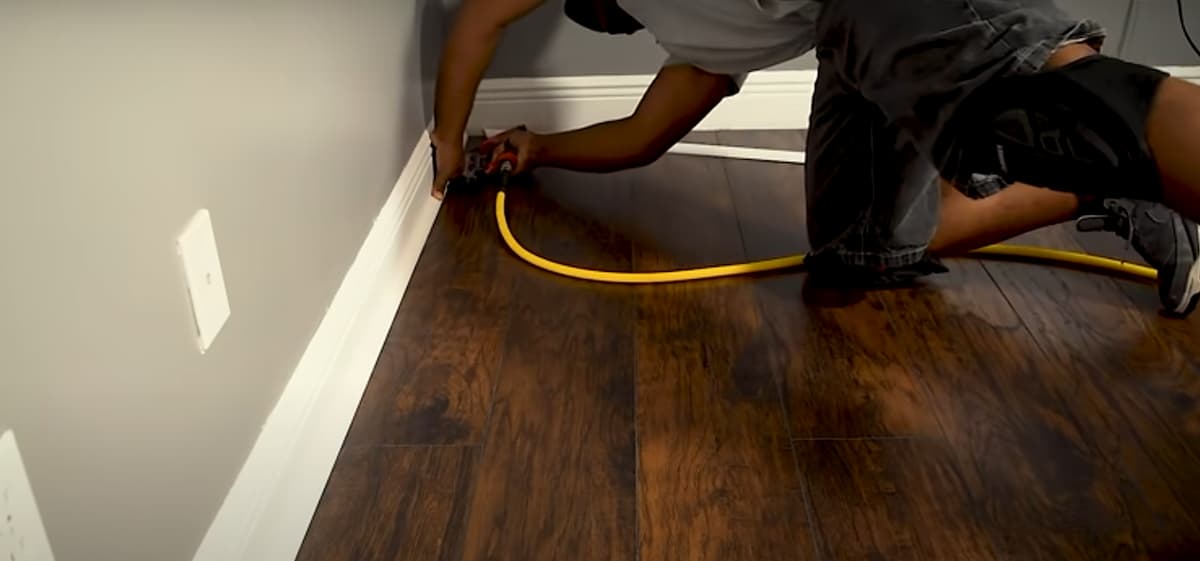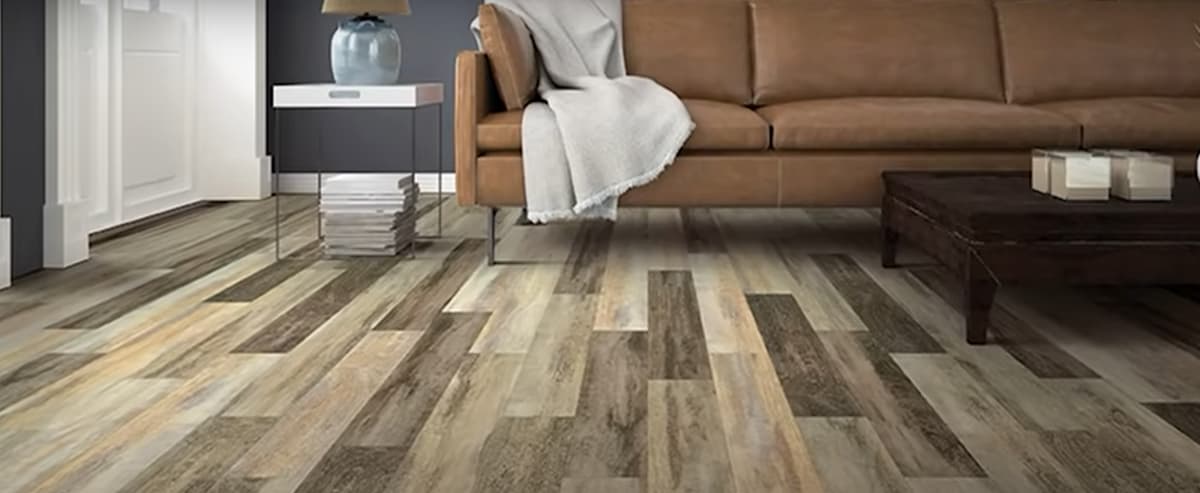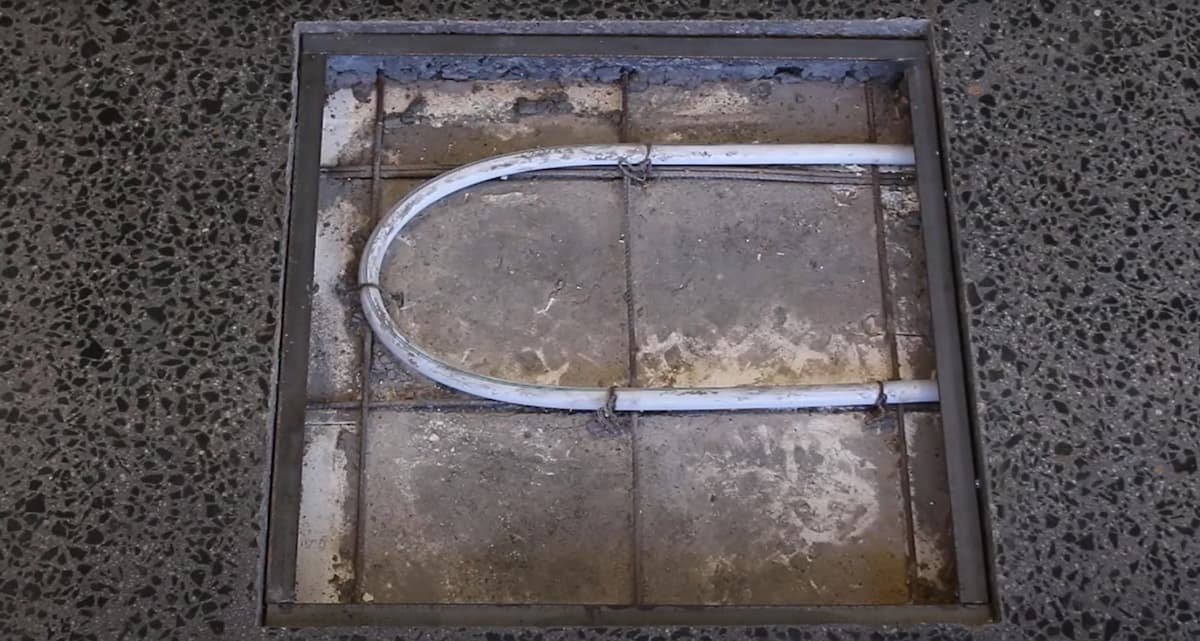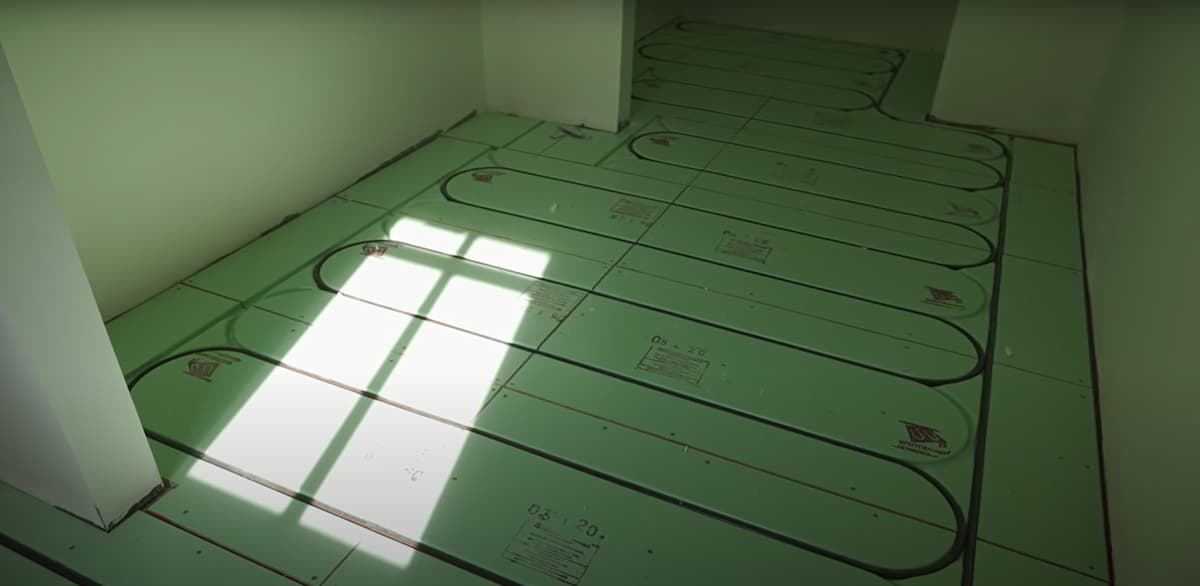
Well, some people might be wondering why bamboo is becoming more and more popular. There are some major differences between these two types of floors that set them apart.
One way to look at it is that bamboo flooring is like an engineered wood product, but superior. It combines the natural beauty of hardwood with the durability and stability of plywood (or OSB). A lot can happen in terms of quality between first-grade plywood and third grade, therefore there may always be a higher cost for third-grade products.
Difference Between Bamboo and Engineered Flooring
Bamboo by nature is very durable. It’s lightweight but strong. The strips are glued together with the grain running perpendicularly to overlap each other. This creates stability throughout the planks when laid horizontally or vertically on your floor. There are almost no visible knots in bamboo because all of the usable pieces are used in production.
There can be some small chipped pieces near the end of a plank where it might have broken off in transit, but this only happens with roughly 1 out of every 30 planks in most cases. You may hardly notice any difference between these boards and intact ones, however, they may not be able to be sold by themselves since they would often look worse than an entirely solid piece with nothing wrong with it at all.
Engineered flooring is made from a higher grade of plywood with fewer knots and a more consistent colour. This type of wood has several thin sheets glued together with the grain going lengthwise, which does not create as much stability. It may have visible gaps in the grain, which creates a more rustic look but also a lower-grade product that’s less durable and more susceptible to moisture.
Most engineered planks only have one strip running horizontally along the entire length of the plank rather than having alternating strips like bamboo for stability purposes. Some engineered products can be prefinished or treated during production for an increase in durability, however, they may almost always contain some form of machine markings across certain boards such as grooves or saw marks, even if they’re only visible under a very bright light.
Engineered vs Bamboo Flooring
Bamboo is a renewable resource that can be regrown in 5-7 yrs, whereas engineered flooring may contain some recycled content but it’s not a renewable source.
Bamboo is a wood product and may expand and contract with humidity changes just like hardwood would. Engineered may retain whatever dimensions the manufacturers give you since they are all identical products of the highest grade.
Engineered flooring is often mixed with cheaper woods such as poplar or spruce to get more board feet out of the same amount of plywood, which lowers quality and durability even further than its lower-grade nature already does
The glue used to bind bamboo planks closely together also helps prevent moisture from seeping into cracks and causing damage. Engineered flooring is either stapled or nailed to the subfloor with glue that is not water-resistant. Like any type of wood, bamboo may absorb moisture into its core that may cause it to expand or contract more rapidly than once thought.
Difference Between Engineered and Bamboo Flooring
Bamboo flooring has a wider range of grades making it unnecessary to have multiple levels of the price tag for your product line since you can sell different qualities at different price points without sacrificing quality compared to engineered hardwood flooring which often forces you to have one middle-of-the-road grade across their entire product line due to their method of production.
Even when pre-finished, engineered hardwood still has a significantly shorter warranty period which is usually only up to 10 years compared to bamboo at 25+ years. Engineered can have issues with swelling or warping in high humidity areas due to the glue used during production, whereas bamboo does not have any risk of this.
Bamboo vs Engineered
Bamboo flooring is much more environmentally friendly than any other type of wood because it can be harvested in 3-5 years rather than 30+ years like red and white oak. It’s also one of the greenest types of flooring that you can buy, with less impact on the environment when processed into flooring at factories by eliminating waste, using renewable energy sources (such as hydroelectric power), and producing almost zero emissions during production
Engineered hardwood is made from natural wood materials, but may still emit some particles into your home for a few weeks or months after installation, similar to new hardwood floors. This is why it is recommended that they’re installed in new homes or ones that are vacant because they may not have many people living in them for a while.
Engineered vs Bamboo
Engineered hardwood is less expensive compared to bamboo flooring because it’s made from cheap species of wood that are more readily available, whereas bamboo is much more expensive since they have to import new material which drives up cost.
Bamboo may expand and contract with humidity changes just like real hardwood would, whereas engineered floors have no movement over time due to the fact that they’re glued together rather than being stitched or fashioned into different strips that can move independently of each other.
It would be nearly impossible for you to repair engineered planks if you were to accidentally damage one of them down the line whereas bamboo is easier to fix by regluing the plank back together due mainly in part due to its size difference.
Bamboo flooring may expand and contract with humidity changes just like real hardwood would, whereas engineered floors have no movement over time because they’re glued together rather than being stitched or fashioned into different strips that can move independently of each
Bamboo Flooring vs Engineered Flooring
Engineered hardwood and bamboo flooring emit different particles into your home, which is why it’s recommended to be installed in homes where people are not living, yet. It also looks much more natural, which takes away from the harsh look of engineered products that use cheap wood species. Bamboo flooring varies in quality and grade, which means that you can buy different grades at different price points without sacrificing anything. On the other hand, engineered hardwood flooring tends to have one middle-of-the-road grade across their entire product line because of their process of production.
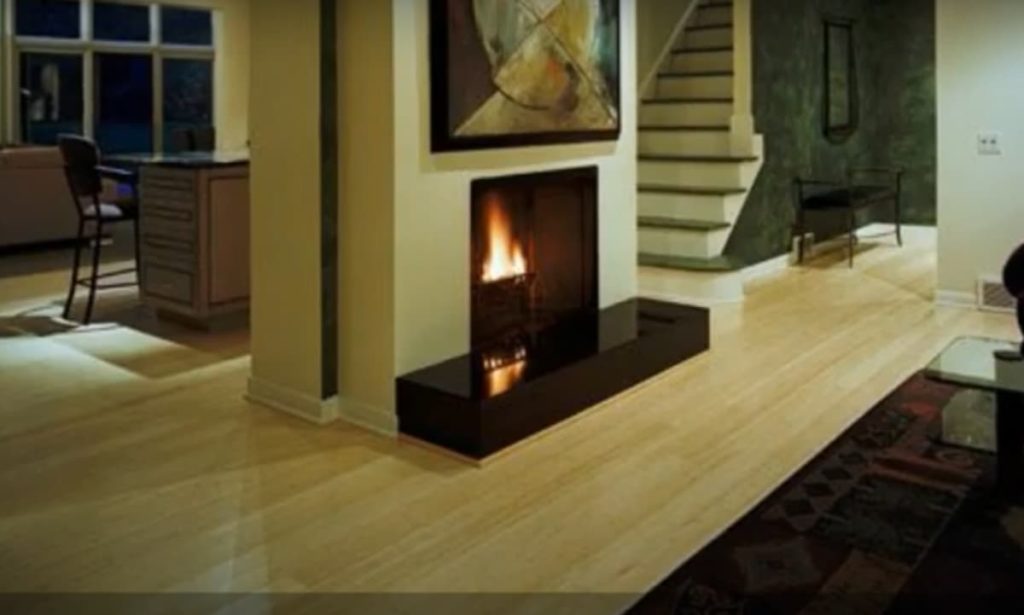
Engineered Flooring vs Bamboo Flooring
When it comes to ease of installation, engineered flooring takes away almost all of the work that you would have to do with real wood products like using a nailer and finishing tools. They also don’t require acclimation to your home’s humidity since they’re not part of the natural environment.
Engineered flooring comes in long, wide planks whereas bamboo flooring is available in short or long strips which give it more of an authentic look compared to engineered hardwood which comes in planks that look much more uniform and artificial. The lack of colour variation also makes them less attractive, whereas bamboo has multiple colours so each plank may be unique from one another depending on where they were harvested from.
Pros of Bamboo Flooring
- No movement over time due to the nature of how they’re made
- Can be repaired easily by regluing it back together after damaged
- A natural product that doesn’t emit particles into your home
- Multiple grades are available at different price points based on quality and grade
Cons of Bamboo Flooring
- Bamboo flooring does emit particles into your home for a few months after installation, which is why it’s recommended to be installed in homes where people aren’t living
- Availability of colours and the lack of movement make it less attractive
Pros of Engineered Flooring
- Engineered flooring comes in long, wide planks which give it a more natural look
- Less expensive compared to bamboo flooring
- No need for acclimation to humidity levels
- in your home
Cons of Engineered Flooring
- Quality and grade tends to be the same across the entire product line because of the process used in the production
- More expensive compared to bamboo flooring when you take into account quality and grade
Environmental Considerations
Incorrect installation of engineered hardwood can cause it to emit particles into your home’s air when you come in contact with the material, which is why its quality and grade tend to vary. Bamboo flooring emits particles when it’s being processed for a few months after installation, but these particles aren’t harmful to humans or the environment.
Manufacturing Process
Engineered flooring is made by gluing together multiple strips of low-quality wood with a thin layer of good quality hardwood in between. In order to produce these strips, the trees need to be cut down and there’s always going to be some waste material when doing this. Once they’re glued together, they go through an automated process that creates a plank with uniform size and thickness across all planks in production. Engineered hardwood and bamboo flooring are both made of compressed strips, which means that the tree is chopped down and processed into smaller pieces which are then pressed together to form an engineered wood plank.
Bamboo flooring comes from grass that grows very quickly, making it a great renewable resource with minimal environmental impact because there’s no pollution produced when harvesting it. It takes three years for bamboo to grow fully which makes it one of the best green materials that can replace engineered hardwood without increasing your carbon footprint or environmental impact.
Quality and Grade
Engineered hardwood comes in a middle-of-the-road quality and grade across the entire product line because the planks are glued together during manufacturing which causes some of them to come apart due to particle movement over time. The good news is that these planks can be reglued back together after they’ve been damaged, making this an easy fix when it happens instead of having to replace the entire flooring. In terms of their grading system, most engineered hardwoods have a three-step system ranging from prefinished with a basic topcoat all the way up to prefinished with topcoat plus a wear layer for even more durability.
Bamboo flooring is only available in one mid-grade quality and grade because it’s a solid material that doesn’t require a topcoat or wear layer for extra durability. It only comes in one colour which gives it a more natural look, but this also means you won’t have as much variety when choosing the floor to replace the existing ones in your home.
Conclusion
Both engineered flooring and bamboo flooring are great alternatives to hardwood floors, but it’s important that you look at both its pros and cons before deciding which one is best for your home. Both of these products have their own set of benefits that make them suitable replacements to traditional wood-based products while minimizing the drawbacks that are associated with installing hardwood floors.
Bamboo flooring is more environmentally friendly, easier to maintain and repair, but it does emit particles into your home’s air during processing. Engineered flooring has a lot of advantages as well, including ease of installation and availability in long planks that look more natural compared to bamboo which comes in long strips or short strips.
Both of these flooring options come at different price points, so it’s possible to get the best value for your money by choosing either bamboo or engineered hardwood depending on what you’re looking for. As long as you keep in mind how they’re made and their pros and cons, then you could be able to make an informed decision on which one is best suited for your home.
If you’re on the fence, engineered bamboo flooring and engineered hardwood flooring are a thing people pick when they are indecisive.


